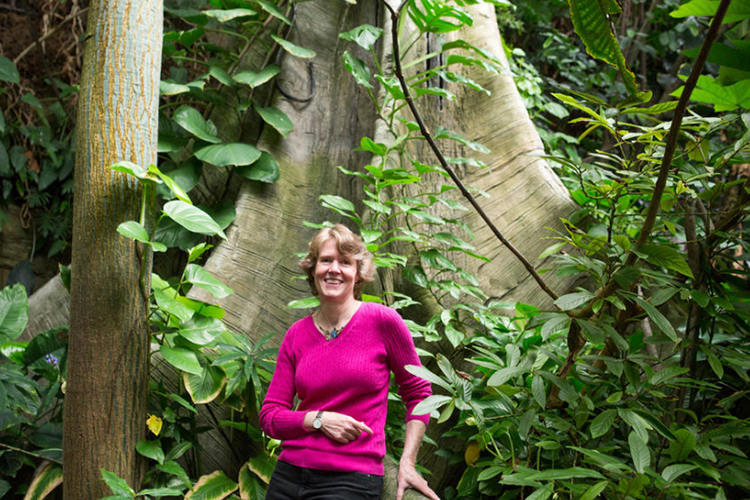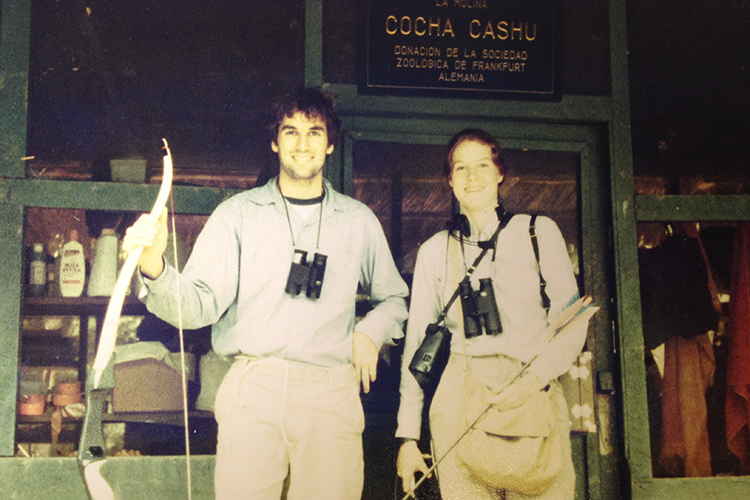Siete de Enero | A story by Meg Symington
Posted by Guest Blogger
in Of Interest
This story was written by Apex traveler, Meg Symington, who was the winner of our recent “Give us the first line of your best travel story” contest. The judges found Meg’s first line to be so intriguing, we asked her to tell us the rest of the story. Enjoy!
Siete de Enero
The driver was drunk by the time we left Cuzco to cross the Andes to the headwaters of the Amazon, our truck loaded with six months of supplies. I was on my way back to the Cocha Cashu field station in Manu National Park where I was going to start the second half of my year-long study of the ecology and behavior of the Black Spider Monkey. I’d taken a few weeks off to spend Christmas in Cuzco, but when New Year’s Eve had come and gone, I began to plan the trip back to the jungle.
I bought our supplies; enough to feed six people for six months: 50 pounds of rice, 12 pounds of beans; 25 pounds of noodles, six cases of tomato paste, three cases of tuna, 45 pounds of sugar, twelve pounds of flour, eleven pounds of powdered milk, 25 gallons of cooking oil, six large tins of soda crackers, eight family-size jars of strawberry jam, 100 rolls of toilet paper, ten pounds of oatmeal, four pounds of Nescafe, and twelve bottles of rum. Although there were only four of us traveling, the supplies were bulky and I arranged to charter a truck from a driver we frequently worked with. The truck was a classic ’56 Chevy pickup with wooden side rails built onto the bed to permit larger loads. By the time we had loaded our supplies, ourselves, and the three fifty-gallon drums of gasoline needed for the boats back at Cocha Cashu, the pickup was nearly full.
We had planned to leave early but a heavy rain delayed us. I had never made the trip from Cuzco to Cocha Cashu in the rainy season before, and I was not looking forward to it. The first stage consisted of sixteen to thirty-six hours in a truck on a winding Andean road so narrow that eastward traffic was restricted to Mondays, Wednesdays and Fridays, and westward traffic to Tuesdays, Thursdays and Saturdays. Only those with a serious death wish would venture onto the road on Sundays, when the traffic went both ways. If you survived the truck trip (the roadside was dotted with small white crossed inscribed with the names of those who had not), you then boarded a twenty-five-foot motorized canoe for a leisurely ride of three to five days, depending on the horsepower of the motor and height of the water. In the rainy season, heavy rains could further complicate things by washing out roads and flooding rivers.
The driver took advantage of our delay by getting outrageously drunk, but we left after lunch despite his condition, since we needed to make it to the checkpoint by 4 pm. I remember little of the ride (except my fear of imminent death on every curve) until we reached Pilcopata, a largish market town and truck stop on the eastern side of the Cordillera, descending to the Amazon basin. We rolled into town just before dawn and pulled over to the side of the road to join the dozens of other trucks full of lumber, bananas, rice, and sleeping drivers and passengers. We arrived too late to get a room at the local pension, but the hygiene there was questionable anyway, and I was satisfied with the bed I fashioned from a twenty-five-pound sack of rice. We fell into welcome oblivion until the first roosters began to crow about an hour later.
After a hearty breakfast of eggs, rice, and yucca, liberally doused with aji, the local hot pepper sauce, we piled back into the truck for the final descent to the lowlands. It was more than ten hours before we reached the end of the road, where it ran literally headlong into the Alto Madre de Dios River. Shintuya, the small mission town located at the end of the road, was a picturesque town with a beautiful view of the Sierra de la Pantiacolla, one of the easternmost outcroppings of the Andes in Peru. From here, all the way to the Atlantic coast of Brazil over 3,000 miles away, the land would drop only 1,500 feet in elevation. In between, lay the vast Amazon rain forest. With any luck and an appropriate boat, we would be safely settled within that vast forest at Cocha Cashu in a couple of days.
We didn’t have too long to wait. The next morning, we heard the high-pitched hum of an outboard motor and ten minutes later, Carlos Moscoso, and his younger brother, Gustavo, bounded ashore. Although Carlos was traveling on to Pilcopata to take care of some business there, Gustavo was available for hire to take us all the way to Cocha Cashu. Although Gustavo was not as experienced a motorista as Carlos, I didn’t anticipate any problems. We set off in high spirits. It felt great to be on the river; the water was high, the current was fast, and the boat was definitely overloaded. But Gustavo knew the Alto Madre well, and we made good time. We made camp on a rocky beach and looked forward to being back at Cocha Cashu in two days.
In the early afternoon of the next day, we arrived at Boca Manu, the small village where the muddy brown Manu River joins the clear blue Alto Madre. From here on, our trip would be upriver, not down, and with many more bends and submerged logs. It was a completely different river and one with which Gustavo was not nearly so familiar. From the very first moment it looked like trouble. The Manu was in full flood. Even with our 55-horsepower motor, it was difficult to move forward against the current. We had to hold tight against the riverbank where the water was less turbulent, crossing from side to side to stay on the outside bank. Traveling along the inside bank would be dangerous since that was the cutting edge. With currents this fast, you never knew when a large chunk of riverbank and assorted debris might come off and get in your way. Switching from side to side was both time-consuming and dangerous since the river was swollen to about three times its normal width, and while crossing, one was exposed to drifting trunks coming down the middle of the river.
About three hours later, our lookout in the bow yelled, and we watched in horror as a large tree on the bank ahead of us, silently and as if in slow motion, fell directly on the bow of our boat. The boat continued inexorably forward, dragging us through the thorn-covered branches of the tree until we finally ground to a halt with the tree laying amidships. There was moment of shocked silence and then our lookout’s head popped up from the river right next to me. He had jumped off the bow just a second before the tree had hit. Apart from some dramatic bleeding cuts from the thorns, everyone was okay. But then we noticed the boat was taking on water. The tree had cracked our bow, and we were filling fast enough to sink within a few minutes. We managed to throw most of our personal gear, which was arranged on top of our supplies, safely to shore. As the boat sank deeper, provisions—I remember vividly the orange plastic bottles of cooking oil—began to float away down the river. Although we were close to the bank, the water was deep, over our heads, and any sort of salvage was impossible as soon as the gunwales of the boat sank beneath the muddy brown water.
I can’t remember exactly when we began to laugh. Maybe it was when we discovered that only one tent had been saved, and we set it up and all piled inside, five soaking bodies in a two-man tent. By the time we pulled out the bottle of scotch that I had hidden at the bottom of my backpack and proceeded to pass it around the tent until it was empty, we were riotous. Although we joked about being shipwrecked for months, we were only three hours upriver of Boca Manu, so we knew that it was only a matter of time until someone saw our supplies floating down the river and came to investigate.
Sure enough, the next morning a caravan of three canoes arrived from Boca Manu. The boats were packed with men, women, and children; half the village had come out for the excursion. In a touching gesture, the villagers announced that the small stream that entered the Manu across the river from where we were would henceforth be called Siete de Enero for the date on which the accident had occurred.
I was to take many more river trips to Cocha Cashu, and I would always ask the motorista to point out Siete de Enero. They always knew, and l would get to tell them the whole story again.
Note from Meg: This is adapted from a longer version I wrote up in the early 90’s for inclusion in an anthology of field trip fiascoes and expedition disasters, entitled “I’ve Been Gone Far Too Long.”



What an absolutely CRACKING story, Meg; riveting, humorous and delivered with panache! Thank you!
Warmest regards to you and John, from Cape Town